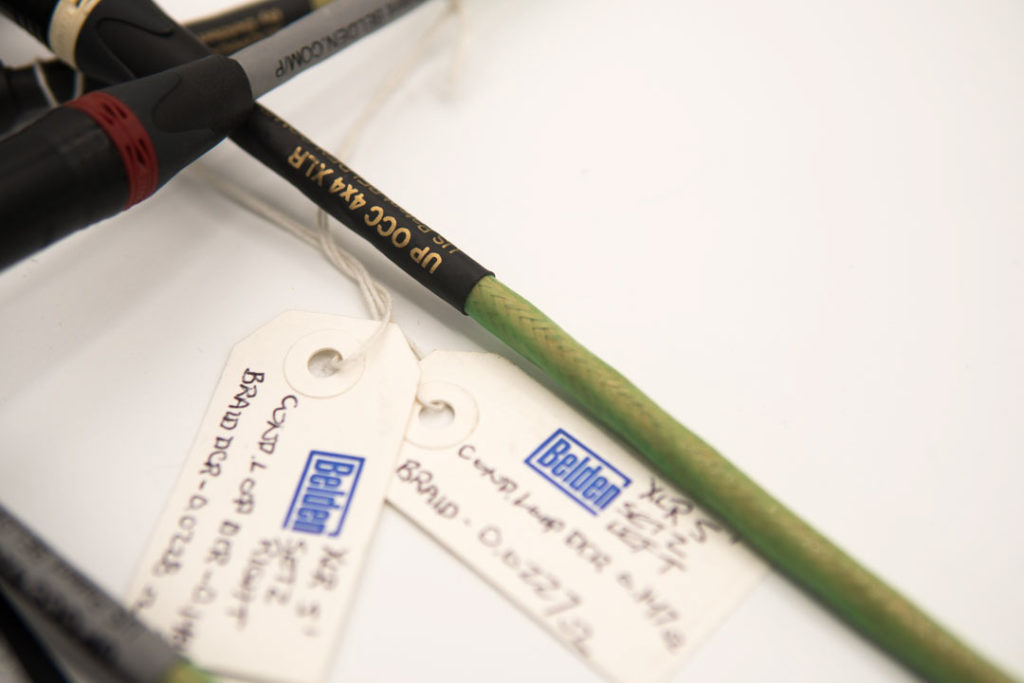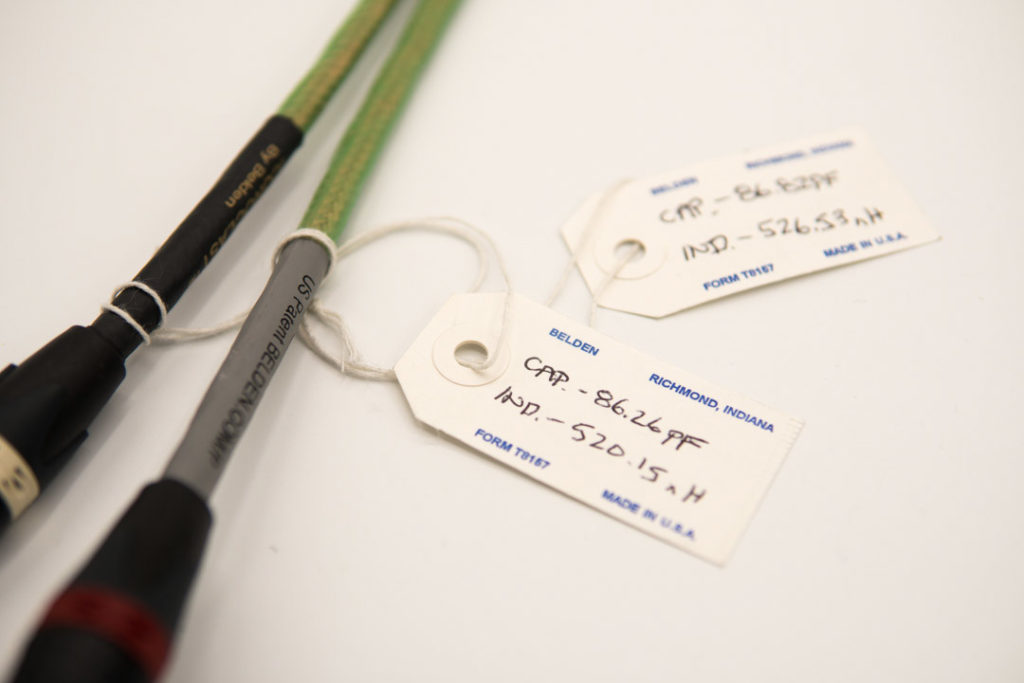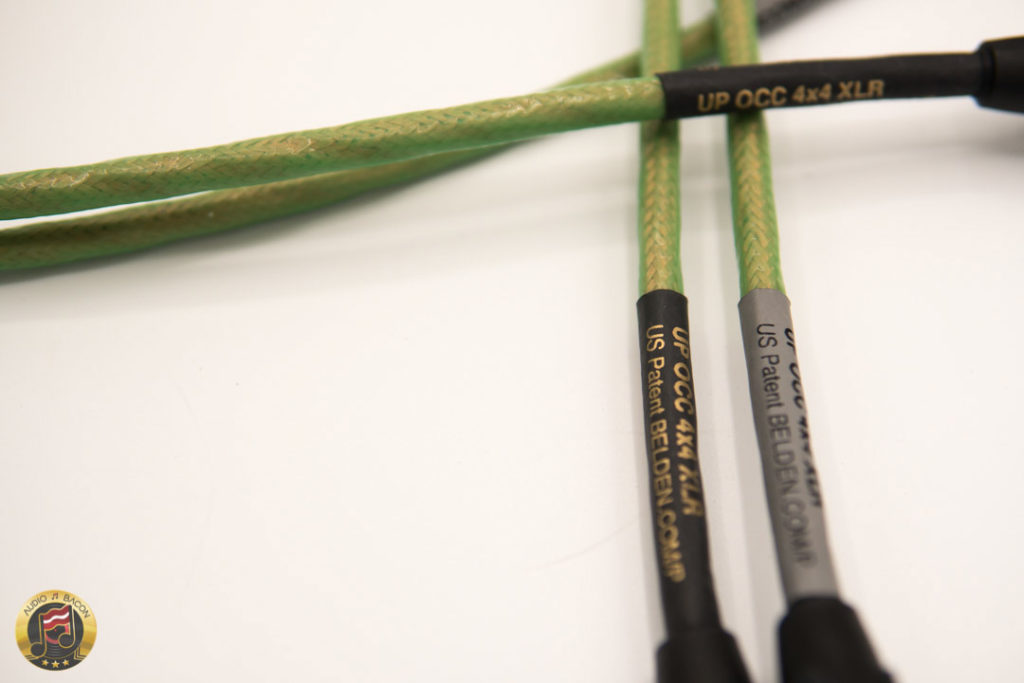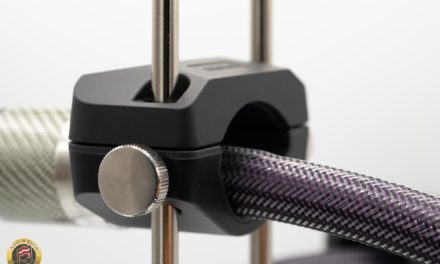Intro
Contents
This review is co-authored by Jay Luong.
Spend enough time in the audiophile industry and you’ll invariably get caught in the crossfire of audiophile cable debates. There are generally two camps.
- The objective camp lives by specific engineering principles, science, and measurements.
- The subjective camp leans on what their ears ultimately tell them. They believe measurements are great for finding errors and for repeatability – but have little to do with how one enjoys music.
In case you didn’t know, we’re of the latter. We gather a bunch of cables (not knowing the price of most of them), plug them in, listen, and write our notes. That’s it. We could care less about design because the proof is in the listening.

Having heard hundreds of different analog cables, it’s obvious each one has their own flavorings. Even among generic cables with similar conductors and geometries. Measurements were seemingly pointless.
That was until we discovered Iconoclast…

The History
What would make the perfect cable designer? First, they have to be an audiophile. Then they would have to have decades of experience in cable design (not just “engineering”). Finally, the proper connections and resources to manufacture it. Believe it or not, this unicorn actually exists. And his name is Galen Gareis.
The Unicorn
Galen Gareis (who was firmly in the objective camp) did something the other engineers and skeptics didn’t. He borrowed a couple of branded speaker cables from Hanson AV – and listened.
To his surprise, he was hearing some substantial differences between cables. Eventually, he discovered that even when a cable has the same R (resistance), C (capacitance), and L (inductance) – they could still sound different. Different copper variants also had their own signatures.
A typical engineer will probably design a poor sounding cable. But an audiophile engineer whose core competency is cable design – now that’s something else entirely.
And thus began Galen’s relentless journey to find out why these cables sounded different.

Iconoclast Cables is Born
Galen has 32 years of experience as one of Belden’s Principal Cable Design engineers – and is responsible for most of their patents. He was basically the Tony Stark at the Belden Engineering Center in Richmond, Indiana.
As such, he has free rein over all the equipment and materials he ever needs for experimentation. If there’s anything that requires being measured accurately, this was the lab to do it in. Also perfect for testing the feasibility of designs.
For example, inductance is difficult to measure accurately with a meter priced below $8,000. But Mr. Gareis is able to profile his meters to an $80,000 Hewlett-Packard LCR machine. Most cable designers won’t have this luxury. And without the proper tools, you’ll just be designing blindly (aka voicing by listening).
It’s all about execution…
For the past three years, he spent countless weekends and nights designing high-end audiophile cables. One particular set of speaker cables had an inductance measurement so low, they all thought the machine needed repairs.
David Miller, senior lab engineer, actually named the cable testing capacitance on speaker cable, and his experience said that many wires can’t test as low as it was. The original design was 25 pF/foot. We tested the calibration samples and the meter was was fine. He commented, “that cable is ICONOCLASTIC”. And so it was named.
Many sleepless nights and three (more) patents later…Iconoclast was formed.
Attenuation isn’t the issue with audio cables, but the reactive variables are (when frequencies arrive at the ends). My design decisions were made following my evaluations of exactly that, how to improve the way current is carried at all frequencies in the audio band. The tech papers go through all that.
We now have a world class cable designer – who’s also an audiophile. Now, all we need now is to build them. Strategic partnerships are the key. Fortunately, Belden manufactures the wire for Iconoclast while Blue Jeans Cable assembles and markets.
If you haven’t realized it yet, this is a formidable partnership that is set to disrupt the industry.
Iconoclast is trying to bring quality to the market with real designs that seem to be lacking in the industry. Insane prices aren’t in our vocabulary.
We don’t have a story outside of transparency in design. Every cable is fully explained as to how it works, and why it looks and is physically made the way that it is. All the measurements, calculations, and charts are there.
Design trumps materials. Anybody can buy and use exotic materials. However, few would want to go through the complexity of a good design. There’s real engineering that goes into the entire Iconoclast line of cables. And we offer them at a fraction of the cost.
– Galen Gareis
Find out more: The Story of Iconoclast

Piquing Our Curiousity
As mentioned, we’ve already accepted that cables were a subjective pursuit. You could have 500 cables that sound completely different (this includes digital cables). Just pick the one you eventually enjoy most.
However, things were a bit different with Iconoclast. It wasn’t “just another cable company.” Their audiophile cables are built from pure science – not “voicing.”
We usually don’t go into the details – but we’ll be making an exception here.
Transparency
The first thing that caught our attention was Iconoclast’s very open approach to research and development. In fact, we can’t think of another company more transparent about their designs. They even have labels for each cable with LCR measurements (more on this later).
Visiting the Iconoclast website, you’ll see a series of white papers with specific measurements and research results that drive their design. Plainly put, for the objective-driven out there; it’s a designed based on science.
Galen and team are very open about the details of their research and work. The papers are full of enough formulas, charts, and graphs to satisfy any measurement geek.

On subjectivity…
At the same time, they’re very open about what they do and do not understand. For example, Galen reports in his whitepaper that he has not objectively measured nor subjectively can hear a difference from cryo treatment of wires.
At the same time, he recognizes the limitations of what he can measure. This is especially the case with different types of copper (ETPC, OFE, UP-OCC). He admits to hearing a difference between the various copper variants – but admits it isn’t measurable. And that is why the cables are offered in a variety of copper pulls.
Passion
Galen’s true enthusiasm in his design is at the forefront. It’s evident from conversations with him and seeing the way he responds on the PS Audio Forums that he’s very passionate about this topic. For example, in discussing options terminations for our speaker leads, Galen drops a knowledge bomb of information, charts, and findings. He goes into the topics of materials, shapes & sizes, and even soldering materials and techniques.
Even if one were given all the resources he needed, it simply takes a higher level of grit and commitment to take R&D this far. Iconoclast has shown they’re willing to do whatever it takes.
Partners
Their partnerships with Kurt & Pam at Blue Jean Cables and Belden. While the core of the research was done by Galen during his time at Belden, the copper itself is manufactured by Belden. The final products are being assembled and marketed by Blue Jean Cables.
This allows them to give more honest pricing and provide greater value for their price points.








Gentlemen, thank you for the wonderful review on Iconoclast cables. We do indeed hope to turn the high end cable industry upside down by bringing Iconoclast to market. These cables are designed using real science by the leading cable designer in the country. He did this for what at first may seem selfish reasons. He did it for himself. Thankfully he shared making it possible for almost anyone to acquire cables that will truly let the rest of their audio system perform. Remember, cables can never add or increase amplitude. Cables usually just get in the way, shadow or just pain mask the signal. Iconoclast cables maximize each factory and more importantly, get out of the way! Interested customers or potential dealers may contact me directly at bhoward@iconoclastcable.com Thank you so very much again for the great review.
Great to have a standard in cables that will satisfy audiophiles and professionals. Will be great for the many young enthusiasts who want to upgrade, but are faced with 50 different brands and many confusing opinions.